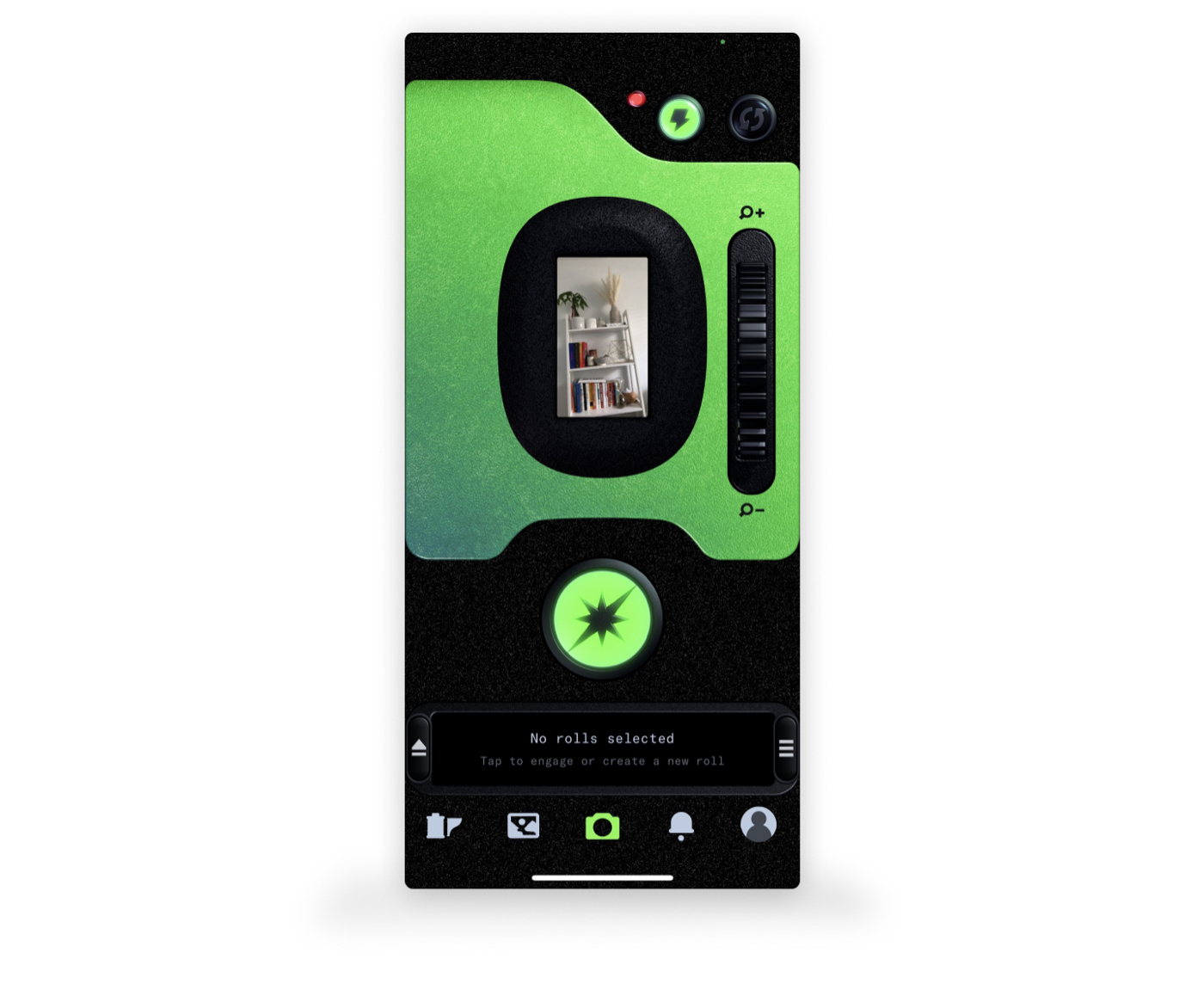
Celebrity apps usually fail. The list of dead projects includes Shots (Justin Bieber), The Swift Life (Taylor Swift), Yood (Kevin Jonas), Beme (Casey Neistat), and more. Chamillionaire’s app “Convoz” launched in 2018 and is still alive, but it isn’t growing fast. Perhaps the pinnacle of celebrity app success was Kim Kardashian’s KIMOJI keyboard; at launch she was making a million dollars a minute! But then the app died in 2018 after years of stagnation. At least it was a better outcome than Jeremy Renner’s app! The poor guy shut it down by saying, “What was supposed to be a place for fans to connect with each other has turned into a place that is everything I detest.”
Why don’t these apps succeed? Most celebrity software fits into one of three categories—each with their own distinctive failure mode:
- A digital souvenir—poor retention.
- A way of getting closer to the celebrity—doesn’t scale.
- A new take on social media—extremely challenging.
When I first heard that David Dobrik was building a photo-sharing app, I gotta admit, I thought for sure it would be remembered as Dobrik’s Folly. Clearly in the third bucket. The basic concept is that you take photos through an interface that looks like a disposable camera, complete with a tiny viewfinder so you can’t really see what you’re shooting. And then the photos are hidden until they’re “developed” at 9am the following morning and shared into “rolls” — basically groups. It’s conceptually similar to Beme, which let users record and share short videos without the ability to preview them. The idea is to prevent people from stressing about their self-presentation.
It’s the kind of thing that sounds nice until you observe actual human behavior. Our reputations and identities are important to us. They determine our friends, lovers, and careers. We rationally spend a ridiculous amount of time editing the version of our lives we want to publish to the internet. (Exhibit A: I spent a ridiculous amount of time editing this post.)
So, given my priors regarding celebrity apps generally and “authentic” photo-sharing apps specifically, I thought Dispo was DOA.
Until last week.
Last week, Dispo launched a beta that went viral in Japan. There are a lot of apps that get a random viral spike, so this alone isn’t evidence of much. But it did cause a nice wave of hype in Forbes, Crunchbase, Axios, Tubefilter, and The Information. Top-tier VCs are rumored to be sniffing around the app, pondering a $100m valuation. The question on everyone’s mind: is Dispo the real deal?
So I took a closer look, as any self-respecting thinkboi would. Immediately, two things became clear to me:
- I actually want to use this app
- Incumbents will struggle to copy it
My general theory of social apps is that they compete on the basis of their network structures, rather than their content formats. The network structure—who sees what—is usually the main driver of value. Plus, it’s easy to copy a format (e.g. Stories), but a network structure is much more defensible.
I’ll give you an example. Just look at Reels, Instagram’s version of TikTok. It seems to be growing much slower than Stories did, and my theory is it’s because the network structure of Instagram is, to some degree, incompatible with the network structure of TikTok. If the main engine of value was the content format, it’d be easy for Instagram to add TikTok-style features to their Story creation tool and call it a day. But, of course, that wouldn’t capture the magic of TikTok. The follower graph is just too different from the For You Page. To copy that, Instagram had to create an entirely new network, jam it in a tab next to their existing network, and hope enough people accidentally tap into it to kickstart a network effect. Stories, on the other hand, plugged right into Instagram’s existing network, so it took off like a rocket.
The thing that fascinates me about Dispo is it has a unique network structure that seems to have the two fundamental elements of successful social platforms:
- Solves a problem for users
- Incompatible with existing networks
These two elements aren’t arbitrary. They’re a reflection of the deepest principles in strategy. Hamilton Helmer (one of the finest thinkers in strategy) defines each of his 7 Powers in terms of the benefit they create for the company that has them, and the barrier they erect to prevent others from taking it. Note how cleanly those map onto elements 1 and 2 from above!
So, what problem does Dispo solve? We all want to share photos from our lives with friends and family, and sometimes with larger groups. But the options we have to do that are surprisingly intense.
Problems
For example, let’s say you took your dog on a walk, or you cooked a nice meal, or you planted a lovely flower in the backyard. You’re feeling some joy and you want to share it with others. How do you do that?
Well, you could post it on Instagram, where everyone you know will see it. But then you think about all the people out there and their judgments and you’re not sure if this is important enough to really make sense as an object in the Instagram timeline.
You could post it to your story, but that still feels too public. Technically they have the “close friends” feature, but that is a pretty existential question to ask about any relationship. You need lower-pressure contexts, and you need a lot of them.
Maybe you could send the photo to a group chat? Now that sounds kinda nice. There’s a specific group of people, and it’s private, so you don’t have to worry so much about whether your photo is content that will perform well. But then you think about it and you’re wondering whether it’s too much. You don’t want to buzz everyone’s phone with every random moment from your life.
So you decide not to send a photo at all. In fact, you don’t even take the photo.
Solutions
Dispo has a few core mechanics that solve this problem. Here’s how it works:
First, take a photo. You can only see a tiny preview of what it will look like, so you can’t fuss too much over perfection. There are no elaborate filtering and editing mechanisms. You just press one button and it’s done.
Then, share it to a “roll”—Dispo’s version of the group chat. Instead of a single timeline, Dispo has an “unlimited number of contexts you can post in.” (This is how Justin Potts put it in his recent essay and I thought it was brilliant.)
Finally, you wait. Your photo doesn’t show up in the roll immediately. It won’t buzz anyone’s phone. Instead, you’ve got to wait until 9am the next day to see all the photos everyone posted to the roll.
This last thing is most important. Before the big recent relaunch, this app was called David’s Disposables and it was a single-player experience. You could take photos and it wouldn’t allow you to see them until the morning, and that was it. The idea was to help you “just live your life” rather than fuss around with editing and judging photos. It’s a nice sentiment and I think there is value in it, but I think there is much more value to the 9am mechanic in social settings.
Unlike sharing photos to a group chat, your photo won’t buzz everyone’s phone immediately. And it won’t show up as a stand-alone thing. Instead, it shows up as one item in the set of all the photos everyone took over the past 24 hours. It’s not really that different from the Stories format in the sense that you know people will only see your photo in the context of a bunch of other photos, but the big difference here is you’re sharing to a specific group of people. Maybe one way of explaining Dispo is “stories for the group text”?
Also, of course, the 9am thing creates a moment. Anticipation is an important component of pleasure. And socially-anticipated moments are even more fun than solo anticipation. It seems like the kind of thing that can be habit-forming without taking over your life. Instead of a continuous stream of new content and notifications, it atomizes the cycle of creation and consumption into a once-per-day rhythm. It’s almost similar to the Long-Term Stock Exchange, which sought to ban high frequency trading, but for photos.
The thing that specifically sounds fun to me about Dispo is the chance to use this with my family. I got a dog recently and I love to cook. Every day there are things I kinda want to share photos of. But I really don’t want to be that guy blowing up the group text with all my stuff. Also, it’s not just me! My sister-in-law shares photos of my niece to a smaller subset of the family group text because some of us want a daily dose and others respectfully just want the highlights.
It’s interesting to see what people are doing with Rolls. People have rolls for book recommendations (just take a photo of the cover), architecture, friend groups, funny things, etc. Rolls can be either public or private, and public rolls can be followed by anyone. They’re almost like Pinterest boards.
This is a unique network structure. It’s a new way of determining who should see what. It solves a problem (pressure-free photo sharing within specific contexts), and because it’s a network rather than a format, it’s going to be hard for Facebook to copy.
So, will Dispo become a big company? I don’t know. These things are always a longshot. But I think they’re one of the more interesting takes on photo-sharing that I’ve seen in a long time.
I’ll be watching!
Ideas and Apps to
Thrive in the AI Age
The essential toolkit for those shaping the future
"This might be the best value you
can get from an AI subscription."
- Jay S.
Join 100,000+ leaders, builders, and innovators

Email address
Already have an account? Sign in
What is included in a subscription?
Daily insights from AI pioneers + early access to powerful AI tools










Comments
Don't have an account? Sign up!
"You need lower-pressure contexts, and you need a lot of them."
This is really the line that stood out to me, on top of all of Dispo's features. Every other app is focused on creating an interreality, a refined version of your identity that makes you appeal to strangers on a professional and cerebral level. I love that on Dispo you can just have people vibe with your real life. There's only so much that credentialism can get you. Maybe this will change one day but it's kind of nice!
Interesting. This deliberately lowers the bar for quality and amazing-ness of the photos. That's helpful for creators, because it reduces effort. But what about the consumers? I wonder if it will be boring to look at. I wonder if anticipation of the 9 am event will sustain itself.
I agree with the dog-walking, flower-in-the-backyard scenario. That happens to me. But some words are better left unspoken. Maybe some pics are better left untaken?
Many apps tried to mimic a disposable camera experience before, and none of them could erupt from a niche. Hipstamatic was probably the pioneer on that, and they're still around, but again, it seems like a niche thing.
It also seems to defeat the purpose of having a high-quality camera on our pockets (smartphones). I agree that humans shouldn't be worrying that much about how a photo or video look before sharing with friends. Still, the smartphone-camera industry doesn't help since they keep delivering camera systems that optimize for aesthetics over reality with one click. It is interesting that if you look at most people's text communication, it is all scrappy and not very good writing, in general.
Lastly, most communication apps support group text, and some of them even channels/categories/threads within a group. That seems to be (so far) an efficient way to share content around one category compared to requiring people to adopt a new app just for this specific purpose.
☕️